Debrah's Blog
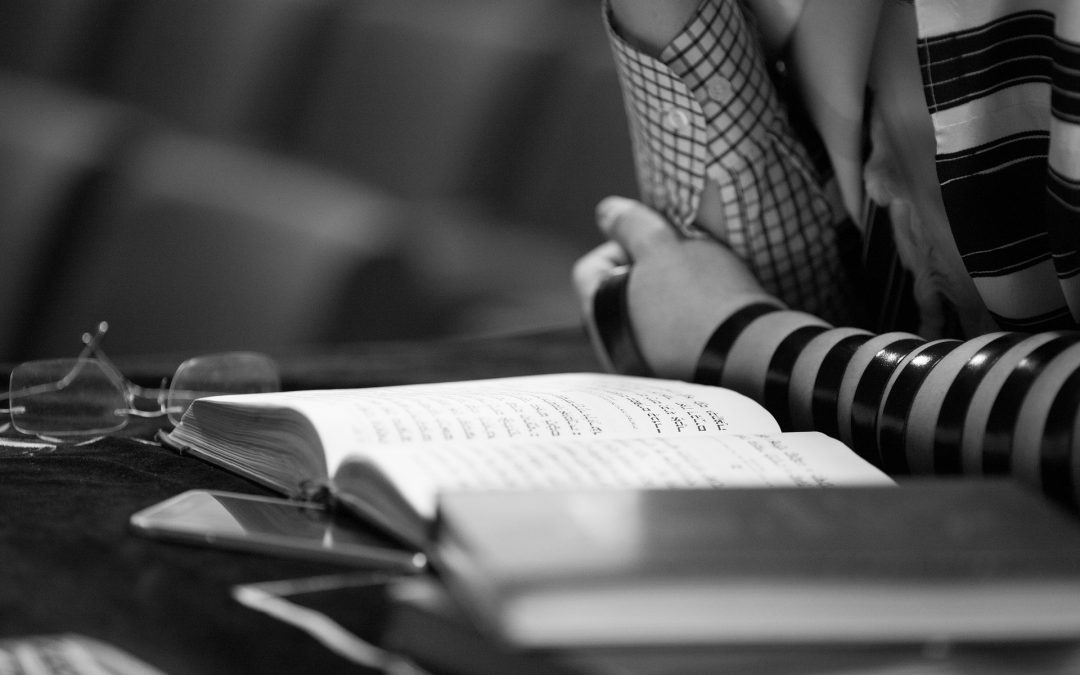
The Cultural Impact of Synagogues in New York City
New York City is home to more Jewish people than any other city in the world, outside of Israel’s cities, of course. Along with that many people of Jewish faith and tradition, whether they are practicing or not, come hundreds of synagogues.
In fact, synagogues are such an inherent part of the city that there are even Yelp reviews (65 pages worth!) rating them.
One of the earliest known mentions of a synagogue in New York is on a map of the city, called the “Miller Plan,” that’s dated 1695. The 19th century brought waves of Jewish immigrants, seeking religious freedom and often escaping persecution, to the city. According to an article on The Center For Jewish History website, there were not enough synagogues to accommodate the demand for services on holy days.
“And the demand for synagogue services on Rosh Hashanah and Yom Kippur was so strong among those who were not regular synagogue members that entrepreneurs hired cantors, sold tickets and rented out halls, movie theaters, stores and churches throughout the city. Even Tammany Hall, the seat of the Democratic political machine, became a synagogue for three days in 1908.”
But synagogues are much more than places to worship. From the very early days, building a synagogue meant there was a place for the community to gather and share, educate children in the tradition of the faith, and even host events. That tradition continues today, and it’s one reason the Charatan/Holm Family Foundation supports several synagogues in New York, both in the city and out.
For instance, Park East Synagogue hosts multiple community, educational and aid programs, many of which are the congregations’ expression of tikkun olam (repairing the world). In January of 2017, UN Secretary General Antonio Guterres addressed Park East Synagogue’s Annual UN International Holocaust Commemoration Service. There’s an ongoing series of Friday evening dinners and lectures that address a wide range of topics.
The building itself is an architectural landmark on the Upper East Side. Built 128 years ago, its architectural style, according to the synagogue website, is Byzantine, “with dome-like cupolas set at various levels, each surmounted by a slender shaft supporting a Star of David. The facade of the building rises from an elaborately designed arched portico.”
Of particular note are the stained glass windows. “From within the sanctuary one appreciates two extraordinary circular stained-glass windows, one above the ark in pink, blue, and silver, called “the Moon” and the other, “the Sun”, in the rear wall, facing the street.”
Just as historically significant is The Chelsea Shul, located in the West Village. The building itself was constructed in the 1850s and was originally a Presbyterian church. Congregation Emunath Israel began in 1865, and they took over the building in the 1920, installing stained glass windows. The culture of the synagogue was, at the time, vastly different than that of Park East. The synagogue serviced, primarily, Jewish people who worked in the garment industry.
Today it’s known not just for services and outreach, such as hospital visits, but also is home to The Rohr Center for JGrads. According to the website, “JGrads NYC offers Jewish graduate students and alumni the opportunity to explore their Jewish heritage in a warm, welcoming, and non-judgmental environment. We are committed to including every Jew, and to creating a social environment and sense of community for graduate students through which they can grow spiritually, personally and professionally.”
On the other side of the historic spectrum, at least in terms of longevity, is The Hampton Synagogue. This lovely, open space was founded in 1990 and is created with wood and glass rather than the stone of Manhattan’s historic buildings.
Again, the synagogue is more than a place of worship. The music alone distinguishes the venue. The summer events, which include author discussions and film screenings, have made The Hampton Synagogue a “destination.”
Synagogues may not seem as culturally and historically significant to New York as, say, bagels. But, when viewed as places of tradition and history, where people can gather and share and enjoy events and conversation, their impact clearly resonates beyond the walls of the structures and into the very communities they service.
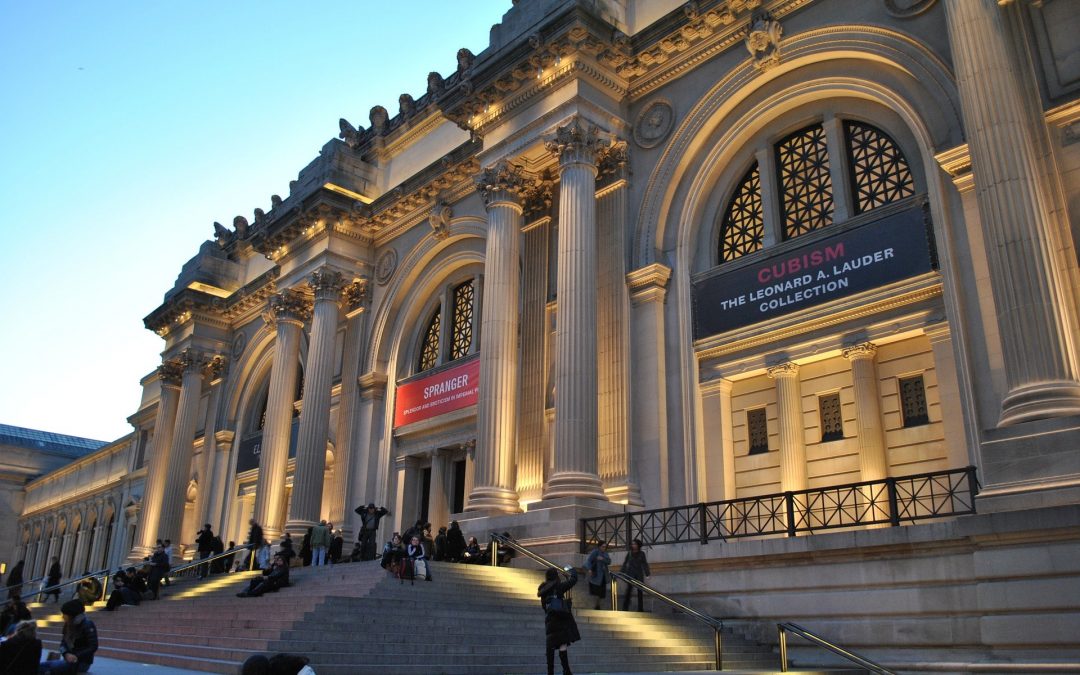
Charity Spotlight: The Metropolitan Museum of Art
The mission of the Charatan/Holm Family Foundation begins with aiding and growing charities that make a difference in the New York City community.
No institution says “New York City” like The Met. Few make a difference in New York the way The Met does. That’s the reason the foundation supports the museum, and I serve on the The Metropolitan Museum of Art’s Real Estate Council. As part of this council, I’m honored to support The Met’s educational programs along with others in and through the real-estate, construction, and architectural industry.
While The Met is well-known, its history and mission are less ubiquitous. Founded in 1870, The Metropolitan Museum of Art had, as part of its original purpose, “encouraging and developing the study of the fine arts, and the application of arts to manufacture and practical life, of advancing the general knowledge of kindred subjects, and, to that end, of furnishing popular instruction.”
That statement was added to, in 2015, and now reads: “The Metropolitan Museum of Art collects, studies, conserves, and presents significant works of art across all times and cultures in order to connect people to creativity, knowledge, and ideas.”
All times, all cultures and connection–it doesn’t get much more New York than that.
Besides housing the collection of glorious art, and curating it as well as the library, research and artifacts, how does The Met present and collect? By making the art (and libraries and research) accessible to everyone.
The museum is actually several buildings, but The Met 5th Avenue is emblematic of everything the organization does well.
For instance, it’s open seven days a week and the ticket price is up to the visitor. While it’s suggested that adults pay $25, any donation will do. That keeps the doors open to everyone.
Once inside, most of the museum is easily accessible for those with physical disabilities. There are even special programs for some populations, like programs with assistive listening devices and real-time captioning for visitors with hearing loss.
Group tours and visits, no matter the physical limitations or abilities of the guests, are encouraged. In addition to the assistive listening devices (headsets and neck loops) that are available for Museum tours and programs, free of charge, from the Audio Guide desk in the Great Hall a Sign Language interpreter may be requested (in advance!) for any guided program.
According to the website: Guided tours with touch and verbal description are available by appointment to groups including visitors who are blind or partially sighted. See For Visitors Who Are Blind or Partially Sighted for more details.
Of course, The Met is very kid-friendly, especially school groups. All fees are waived for schools located within the five boroughs of New York City (due to the generous support of Lewis B. and Dorothy Cullman!)
Finally, The Met extends itself beyond native New Yorkers. Non-English speaking visitors can use a guide in one of six languages: Spanish, French, Italian, Portuguese, Chinese, and Japanese. There are also tours available in multiple languages including Korean, Mandarin, Portuguese and Russian.
To call The Met an icon is an understatement. It is central to the identity of New York city, and a wellspring of beauty, knowledge and culture. Really, what would New York be without it?
It’s a joy to support an organization that gives so much back to the city, and the world.

How WIZO Impacts Women Locally and Internationally
One of my proudest achievements has been the opportunity to give back to New York City through the Chartan/Holm Family Foundation, which I established with Steve Holm in the mid-1990s to aid and grow local charities. We’ve put our core values of community, culture, clarity, and care at the forefront. These are the elements in many successful and impactful missions. They are in Maslow’s hierarchy of needs and are themes in every work of literature. For a society to be healthy, people need their health, creative inspiration, and support from other human beings.
I’m not just thinking of New York, or my neighbors. The impact of good work and positive intentions is always more than your immediate surroundings. For the charities we support, local progress translates to national and global impact. Our work at Chartan/Holm Family Foundation is centered in four areas: The arts, medical care, elderly/disabled/youth care, and Jewish initiatives.
The Women’s International Zionist Organization (WIZO) is an excellent example of a charity with local branches and huge international impact. We selected to support WIZO because of its extensive and complete reach across many areas community and personal growth. WIZO improves lives by providing social service programs and educational facilities in Israel, with a focus on women, family, and community welfare. Their projects touch people at all stages of life, including schools, child care, safe homes for girls, shelters for women escaping domestic abuse, women’s advancement projects, and services for the elderly.
The emphasis WIZO places on education is something that resonates with me and my personal journey. I put myself through college working as a secretary and property manager, and went on to found and grow Bach Realty with an all-woman sales team. Our success over the years wasn’t easy. The 80’s was a time when women were pushing hard to be recognized. Even today, women earn less than men. No matter the obstacles, the ability to pull oneself up is essential. WIZO’s programs are a direct effort to remove people from the cycle of poverty through academic, vocational, and agricultural training.
There is a long history of success behind WIZO. After its establishment in Great Britain in 1920, it was recognized as a NGO by the United Nations in 1959, and became the first Zionist organization to achieve consultative status for the United Nations Children’s Emergency Fund (UNICEF) and the Economic and Social Council (ECOSOC). WIZO USA has two representatives to the United Nations and an operating budget of $100 million. With this, it operates over 800 programs. It is second only to the Israeli government in providing for women, children, and the elderly, and is also one of the largest employers in Israel.
For children, this work is especially important. WIZO provides more than 900,000 meals to people in need in Israel each month, many of them malnourished children. At Nir Haemek High School & Youth Village in the northern city Afula, there are dormitories and facilities for 175 children from dysfunctional homes. Many of these students have Attention Deficit Disorder/Attention Deficit Hyperactivity Disorder (ADD/ADHD) which they are finally able to overcome with the safe, caring environment and professional help that Nir Haemek provides. Children also learn about growing plants, a cheese factory, holocaust studies, and animals.
I’m especially amazed by the transformation of women who are served by the WIZO shelters. Battered women come to WIZO in collaboration with the police, hospitals and the local family welfare centers. In Israel, 12 shelters provide safe harbor for women and children for up to six months, or longer in special cases. After the women join the home, social workers meet with them and the children to plan for their rehabilitation and safe future. Children attend school within the shelter or in the neighborhood nearby.
The shelters at WIZO are not just places of safety, but also for growth and opportunity. There is a lawyer who ensures the women receive assistance with needs such as separation orders. Women are also given control to decide activities and rules in the homes as a group. Each of them goes through a process of meetings, interviews, workshops, and advice to emerge empowered, prepared, and independent for her next steps, both emotionally and financially. Finally, WIZO provides a support network in the community, and daycare so the mother can work.
A holistic view is what sets WIZO apart. Each project focuses on the individual’s potential, and sees them through from beginning to end. There is no point where WIZO leaves people by themselves, it cares for the whole person throughout their lifecycle. There is a message of hope and perseverance here that many people will recognize in their own lives.
Are you ready to ask me how you can get involved? In the US, there are seven chapters of WIZO USA, including New York, New Jersey, Long Island, Westchester, and the New York Young Leadership chapter. Each of these has meetings, donation events, and community events. Those interested in volunteering can attend one of the planning meetings to learn what activities are coming up. College students can also volunteer in Israel at the communities.
I’ve been fortunate to succeed, and I’ve also worked hard for my success. It’s a pleasure to know that I can now help others on their path to realizing their greatest selves.
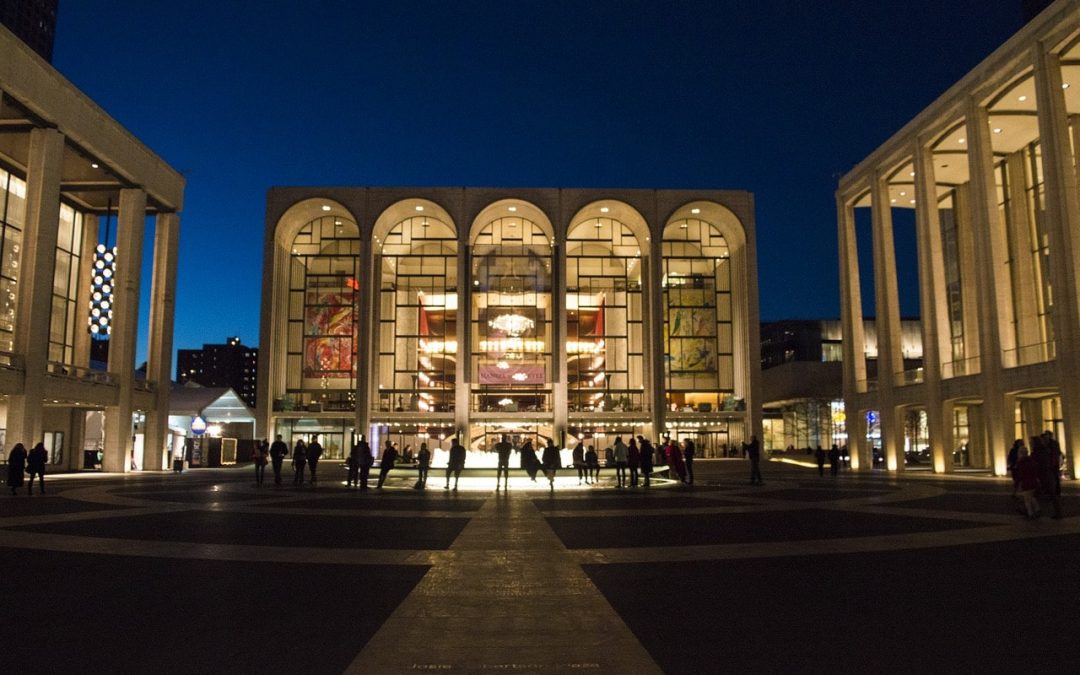
What’s Not to Love, and Therefore Support, at New York’s Lincoln Center?
Dance, music, film, opera, theater—the arts are as central to New York City as Central Park. Maybe more so, because on any given day you can walk around the corner in any neighborhood and find art, or hear a street musician.
Then, of course, there are all of the official arts organizations.
It is a great privilege, and a true pleasure, to help the arts in our city with support from The Charatan/Holm Foundation. I’m especially proud of our relationship with Lincoln Center for the Performing Arts, which is practically one-stop-shopping for the performing arts.
As a member of Lincoln Center’s Women’s Leadership Council, a volunteer position, I (along with my sister committee members) am charged with raising unrestricted dollars for the arts organizations and educational institutions at Lincoln Center.
Every dollar raised goes to something glorious— dance, music, theater— all the arts New Yorkers love.
One of the oldest groups with a home at Lincoln Center is, of course, The Metropolitan Opera (known by New Yorkers and opera buffs as “The Met”) which was originally founded in the 1880s.
While opera may not be everyone’s “go to” theatrical experience, I find it exciting to be part of something that’s established, respected, and features such amazing performers as Renée Fleming.
Fleming is an example of the extraordinary level of the Lincoln Center associated artists themselves, united in their desire to share their gifts with the world. This past April she performed with one of the newest organizations to join Lincoln Center, Jazz at Lincoln Center. Accompanied by the Jazz at Lincoln Center Orchestra, which was founded by trumpet player, American original and ambassador of all-things-jazz, Wynton Marsalis, Fleming honored Ella Fitzgerald by singing one of her iconic songs.
JALC demonstrates the ways in which Lincoln Center reaches out. The Jazz organization has programs for youth and youth orchestras, they offer free live-streams of many of their concerts, and the JALC Orchestra tours both nationally and internationally.
When young people fall in love with an art, and begin to study, it’s so important to nourish that gift. Many of the groups at Lincoln Center offer free, or inexpensive, educational programs and performances for children. But two organizations, Julliard and The School of American Ballet, go much further.
Since 1905, The Juilliard School has been a world leader in performing-arts education. Its mission is “to provide the highest caliber of arts education for gifted musicians, dancers, and actors from around the world, so that they may achieve their fullest potential as artists, leaders, and global citizens.”
Our foundation’s mission is completely in line with the mission of Juilliard. We, too, want to help people reach their full potential which is why we are so deliberate in our financial decisions.
Of course, it’s impossible to talk about Lincoln Center without mentioning the New York Philharmonic (officially the Philharmonic-Symphony Society of New York.) It, too, was founded in the 1800s and is considered to be one of the top symphonic orchestras in the country. Despite their prestige, they offer programs that are engaging and fun. This year there’s a series of four concerts geared specifically towards children ages 6 to 12. There’s also a “film concert” available— the orchestra plays movie soundtracks with all the cinematic glory and drama possible.
In total, there are about a dozen organizations at Lincoln Center all under one umbrella. The organization truly offers something for everyone, and at every price point, including free!
The unrestricted nature of the funds raised by The Women’s Leadership Council (and the support The Charatan/Holm Foundation gives) permits the organizations to use the money to maximum effect—such as engaging in the creative educational programming I’ve described as well as presenting exciting new productions, and developing essential, free, performances.
Author Susan Vreeland once said, “Where there is no human connection, there is no compassion. Without compassion, then community, commitment, loving-kindness, human understanding, and peace all shrivel. Individuals become isolated, the isolated turn cruel, and the tragic hovers in the forms of domestic and civil violence. Art and literature are antidotes to that.”
At The Charatan/Holm Foundation, we believe that it’s possible to have a vibrant, loving, community here in New York and beyond. By supporting the arts we hope to give people a chance to enjoy, engage, connect and build that community.

Noteworthy Charities Enhancing Medical Care in New York City
With all the debate about access to healthcare in this country, these organizations are stepping up and truly helping people.
The core mission of The Charatan/Holm Family Foundation is to aid and grow charities that make a difference in the New York City community and, hopefully, to make the city and the world a better place.
I take this mission and vision seriously—and not just because my name is on the foundation’s website. I believe that time, energy and money can be leveraged in such a way that the lives of New Yorkers will improve.
Of course, in order for people to live engaged, fulfilling, lives they must first have access to good medical care, especially during times of a health crises.
That’s one reason our foundation supports a variety of health and medical organizations, ranging from those that help transplant patients to groups that do cancer research and provide early detection services.
In a previous blog, I discussed the Charatan/Holm foundation’s relationship with The Ellen Hermanson Foundation and the Samuel Waxman Cancer Research Foundation. Succinctly, these are partnerships I’m particularly proud of because supporting these two organizations tackles cancer from two angles: research and early detection and treatment.
The Ellen Hermanson Foundation’s mission is to help people on the East End of Long Island access state-of-the-art breast health care and empower people affected by cancer.
On the other end of the cancer-fighting spectrum is the Samuel Waxman Cancer Research Foundation.
As stated on their website, “the Foundation is a pioneer in cancer research and its mission is to eradicate cancer by funding cutting-edge research that identifies and corrects abnormal gene function that causes cancer. This research is the basis for developing minimally toxic treatments for patients. Through the Foundation’s collaborative group of world-class scientists, the Institute Without Walls, investigators share information and tools to speed the pace of cancer research.”
Another group we partner with, The Kidney & Urology Foundation of America, approaches their work holistically, helping with everything from public education to direct support for people awaiting transplants. Their broad and inclusive mission, “dedicated to helping people with kidney and urologic diseases and individuals waiting for organ and tissue transplants” allows them to work at all levels.
Their website states that “The Kidney & Urology Foundation focuses on care and support of the patient, the concerns of those at risk, education for the community and medical professionals, methods of prevention, and improved treatment options.” This ability to work with patients and professionals alike is invaluable, and in line with our foundation’s focus on community and care.
A similar foundation, the Kellner Pediatric Liver Foundation, is also on our roster of excellent charities. The mission of the foundation, reducing the incidence of pediatric liver disease through research, awareness and education, and providing resources to families who are affected by pediatric liver disease, again encompassing the problem of pediatric liver disease in its entirety.
Finally, I want to highlight the work of the Caron Foundation. Addiction is a disease, a horrible disease and it’s reaching epidemic proportions. Overdose deaths have been on the rise in New York City for the past five years, and last year there were more than 1,000 deaths due to accidental overdoses.
In 2012, in New York, there were nearly 43,000 hospitalizations related to alcohol use and dependence.
The Caron Foundation and associated treatment centers have been helping individuals and families recover from and combat addiction for decades. Caron’s stated mission is to “transform lives impacted by drug and alcohol addiction through proven, evidence-based, comprehensive and personalized behavioral healthcare.”
Addiction is as complicated as any other disease, and has the added burden of being stigmatized—as though the addicted person is somehow at fault for their illness. I believe that people dealing with addiction need genuine, compassionate, and deserve access to excellent care—just as those dealing with cancer and other diseases.
Proper medical care, for New Yorkers and the extended New York community, is key to enjoying all this great city (and state, and world) have to offer.
The Charatan/Holm Family Foundation is dedicated to helping healthcare and medical charities, so those organizations can do what they do best—help people get treatment, become and stay healthy, and stay engaged in life.

Three Great Causes Dedicated to Ending the Gender Pay Gap
As a female entrepreneur and a proponent of female entrepreneurship, it should be no surprise that I’m also fully supportive of workplace equity.
Equity, the fair and equal treatment of all employees regardless of gender or gender identification, can take many forms. When I began my career as a secretary, the fight ranged from the right to wear slacks to work to recognition for work done.
There has certainly been progress, but one key area has still not been addressed adequately: pay equity.
It seems simple: do a job and get paid for the work that’s done. But women who work full time in the U.S. still, on average, only take home about 80 cents for every dollar a full-time male worker earns (some studies set the figure as low as 73 cents).
In fact, in a 2014 2014 World Economic Forum report, the U.S. came in 65th out of 131 countries for gender pay equity.
The pay gap crosses industry lines, and in 2015 people from Hollywood actresses to Google engineers fought to bring the inequality to light, with some companies taking steps towards change.
How can we, as individuals, change this disgraceful status quo? One simple way is to support an organization, with time, energy and/or money, that’s working on the issue.
There are three groups that have been fighting the good fight on pay equity since before panty hose were invented, and required for career minded women working in offices.
Each of these groups offers education and resources about the pay equity problem, and some suggested solutions.
The stated mission of the American Association of University Women (AAUW) is “advancing equity for women and girls through advocacy, education, philanthropy, and research.”
Founded in 1881, the AAUW’s website hosts a wealth of information about pay equity, included a downloadable “quick facts” sheet. They also publish a report called The Simple Truth that dives into the details of pay inequality and the need for economic justice. The most recent edition has been updated to cover disability status, gender identity and sexual orientation.
With chapters all over the country, including Long Island, New York as well as Staten Island, there are multiple non-digital ways to get involved with AAUW.
On the flip side is the National Committee on Pay Equity.
According to the website, the committee, founded in 1979, “is a coalition of women’s and civil rights organizations; labor unions; religious, professional, legal, and educational associations, commissions on women, state and local pay equity coalitions and individuals working to eliminate sex- and race-based wage discrimination and to achieve pay equity.”
The group has detailed steps that businesses and individuals can take to close the pay gap, information on current and past legislative efforts, and a fascinating, frustrating timeline about pay equity. Yes, things are better since the Equal Pay Act was signed in 1963, but we’re far from “there” yet.
NCPE is also behind Equal Pay Day, which launched in the mid-nineties. Primarily an online resource, it’s a great one.
Finally, there’s the National Organization for Women, NOW.
At the forefront of all things feminist, the grassroots organization was founded in 1966 and has been unflinching in its advocacy efforts since.
Economic justice, including pay equity and ending job discrimination, is a top issue for the group.
“NOW advocates for a wide range of economic justice issues affecting women, from the glass ceiling to the sticky floor of poverty. These include welfare reform, livable wages, job discrimination, pay equity, housing, social security and pension reform, and much more.”
NOW, like the AAUW, has chapters in all 50 states, and basic membership dues are less than $50—even in New York!
Equal pay for equal work has been a battle cry of the women’s movement for years. And why shouldn’t it be? If the work is done then it shouldn’t matter if you wear a skirt, pants or a kilt. It matters that you get paid, properly and with no gender bias, for a job well done.

Three Steps to Fight Hate and Anti-Semitism in Today’s Troubling Times
There are organizations out there that need our help as they defend and preserve Jewish culture and identity in the United States.
In late 2016 and 2017, a rise in hate crimes has been widely reported in both mainstream media and social media, including brutal acts of anti-Semitism.
Some attribute the rise to the results of the election in November 2016. Others, like Mark Oppenheimer in this Washington Post article, point out that the trend is not new—it’s just getting more attention than it did in 2015.
Jewish people, cultural centers, and synagogues have certainly been targeted. In January 2017 alone there were at least 48 documented bomb threats made to Jewish community centers across the United States.
As the daughter of holocaust survivors, I have worked tirelessly to support my local Jewish community and the cultural and educational efforts of Jewish organizations across the country. I am appalled by the headlines, the neo-Nazi propaganda, and the swastika graffiti that’s been reported from small towns, big cities, libraries and college campuses.
But, as a fighter, I know that there are ways to push back and organizations that need your support in order to continue the work of fighting hate, ignorance, and anti-Semitism.
Because it doesn’t matter if it’s one “incident” or ten—even one is too many.
I suggest a three-step approach to stopping and reducing the hate.
First, make sure crimes are documented, hate groups are outed, and legal resources available to victims.
Two national organizations are particularly good at this work.
The Southern Poverty Law Center is “is dedicated to fighting hate and bigotry and to seeking justice for the most vulnerable members of our society.” The organization tracks crimes, and hate activities, as well as the groups that commit the acts. Unfortunately, there are at least four known neo-Nazi groups in New York.
The national organization that specifically focuses on Jewish people is ADL, the Anti-Defamation League. Since 1913 it has been fighting antisemitism, bigotry, and hate. While the organization deals with problems across the country, it’s organized by region and even has an office right here in New York City.
Second, support educational initiatives about Judaism and anti-Semitism.
At the national level, the ADL is a great resource.
But locally, in our own communities, this support can be as simple as helping the local school, synagogue or community center. For instance, the Charatan/Holm Family foundation actively supports Chabad of Southhampton, Park East Synagogue, The Hampton Synagogue, The Chelsea Shul and the Gottesman RTW Academy.
Another option is to use your own information and resources to share accurate, even positive, stories on social media. The alt-right and Holocaust deniers are loud, but not known for fact-checked, accurate information. Fight ignorance with intelligent articles and stories that tell the truth. New York’s own New York Times and Wall Street Journal are great starting points!
PBS also has an outstanding, ongoing, program, “The Jewish Americans” that tells stories and documents the truths of being Jewish in America. The website has a long list of links to additional educational resources, including The Center for Jewish History.
Finally, it can’t be said too often, never forget.
As much as I’d like to think the world learned from the horrors of the Holocaust during WWII, I also know that people have short memories.
At a time when the White House Press Secretary can casually misrepresent the tragedies of concentration camps, it’s important to support the museums and organizations that keep this history alive.
The United States Holocaust Memorial Museum, in Washington, D.C., does an excellent job of teaching without flinching from the truth.
More specific stories and remembrances are found at organizations like the Jewish Partisan Educational Foundation. Online, and through educational programs, this group shares the stories of the more than 20,000 Jews who fought back against the Nazis.
Whatever organization you choose to support, ensure that your advocacy is loud and proud. Visible support for Jewish communities will go a long way in combatting hatred, because it proves that love is a powerful force in times of joy and in times of strife. Whereas silence can be isolating, raised voices elevate our shared goals: unity and peace.
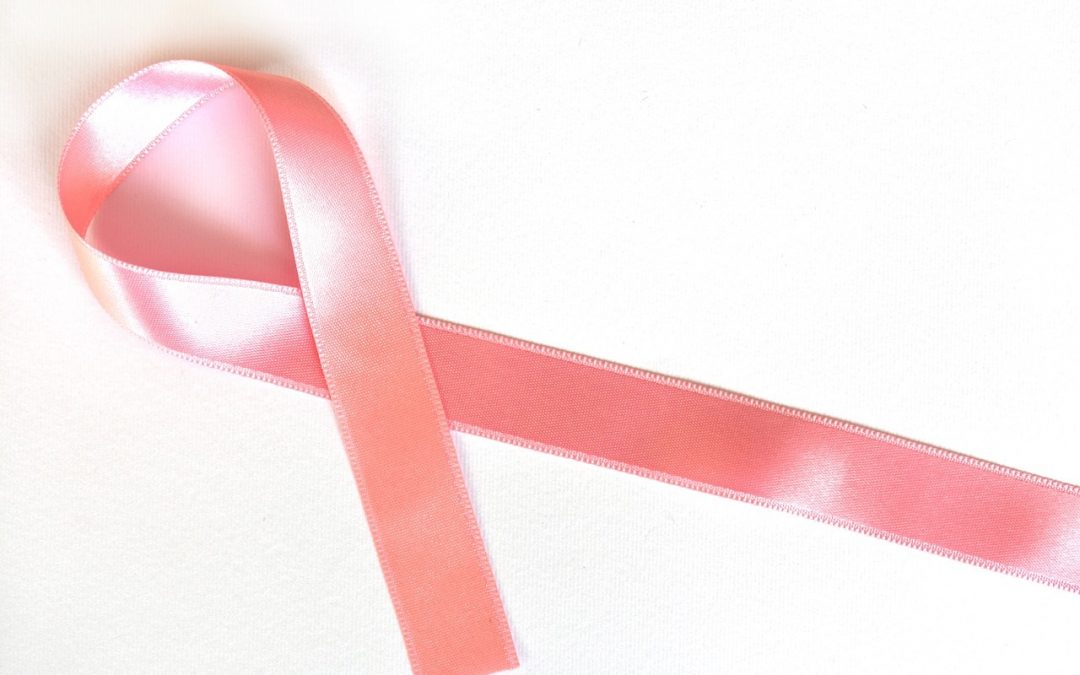
Helping Breast Cancer Patients in the East End
The Partnership Between The Ellen Hermanson Foundation and the Charatan/Holm Family Foundation
Breast cancer is a diagnosis heard far too often, by too many women. In New York alone, about 15,000 people are diagnosed with the disease annually.
It is always a life-changing diagnosis. Painfully, it’s also one that can end in death.
As a woman, and a New Yorker, I’ve tried to use the resources of my foundation, financial and otherwise, to support the research that will find new treatments for cancer, and to help people when they are diagnosed.
That’s why I’m so proud of the partnership we have with The Ellen Hermanson Foundation.
In 1989, Ellen Hermanson was diagnosed with breast cancer. She had just become a mother (her daughter’s name is Leora) and fought hard, for years, to defeat the disease. During her battle she used her training as a journalist to become a powerful advocate for breast cancer awareness, early detection, and patient and family care. She wrote and edited newsletters, gave speeches, and raised awareness until the end.
In 1995 Ellen died, and her sister, Julie Ratner, founded The Ellen Hermanson Foundation. The foundation’s mission is to help people on the East End of Long Island access state-of-the-art breast health care and empower people affected by cancer.
In this 2014 article, Julie explains her commitment:
“After Ellen died, I needed to continue the work she started and make sure that Leora would always remember her mother. With that, Emily and I started Ellen’s Run in 1996, and we established The Ellen Hermanson Foundation the following year to ensure that medically underserved women would have the same access to care and support that was given to Ellen.”
As the Ellen Hermon Foundation website states, there are two main area of focus.
- educational outreach about the importance of mammography and early detection to medically under-served communities of women
- psycho-social support services that address the broad range of issues facing breast cancer patients, survivors, spouses, families, and friends
There are several reasons why the Charatan/Holm Family Foundation’s mission aligns so well with The Ellen Hermanson Foundation.
Clearly, there’s the focus on health and healthcare, and for women specifically. But another thing our foundation really cares about is commitment to community.
Just last year, Southampton Hospital opened a new, state-of-the-art breast center: The Ellen Hermanson Breast Center. This facility offers life saving diagnostic tests, including bone densitometry and mammography with tomosynthesis. The location makes this testing more available to women in the East End.
Funding the building of a breast cancer center near the community that needs the services is an exceptional way to support your local community. I commend the Ellen Hermanson Foundation for their informed, careful, donation to Southampton Hospital.
It is, as I like to say, “mindful altruism.”
Another example of this mindfulness is the availability of support services for the cancer patient and her family at the breast center. Medical care doesn’t begin and end with chemotherapy, surgery or radiation. There are a multitude of physical and emotional needs experience by cancer patients and their families as they deal with this devastating disease.
The newspaper article that covered the opening of the center quoted Robert Chaloner, President and CEO of Southampton Hospital about this. “The Ellen Hermanson Breast Center is a critical resource for women on the East End, enabling us to provide a comprehensive array of diagnostic services and treatment as well as invaluable support services for diagnosed patients and their families.” (Emphasis mine.)
In addition to The Ellen Hermanson Foundation, our foundation supports the work of organizations such as the Samuel Waxman Research Foundation.
Why?
Because, as stated on our mission page, “we want every entity under our umbrella to reach its full potential and maximize its efforts with the help of funding and goodwill.”
We also want the people served by the groups we support to have the maximum benefit we can offer. When it comes to cancer, that means diligently pursuing new treatments and searching for cures while also making sure that people affected by the disease have the best medicine can offer.
Clearly, that’s the goal of The Ellen Hermanson Foundation as well. For 20 years they have raised funds and directed those monies to the places, in their own community, where they will most benefit breast cancer patients. They also advocate and educate about early detection—which is a mindful approach to defeating a terrible disease.
I never had the pleasure of meeting Ellen Hermanson, but all that I’ve read about her makes me proud to support the foundation built in her name. I firmly believes that in this day and age, with all the technological advancements and awareness we have, nobody should have to go through the terror of receiving a late diagnosis. With luck, funding, and support, foundations like this will help eliminate this occurrence, making the world a safer place for all.
Photo by Tom Fitzgerald and Pam Deutchman for Society-In-Focus / society-in-focus.com
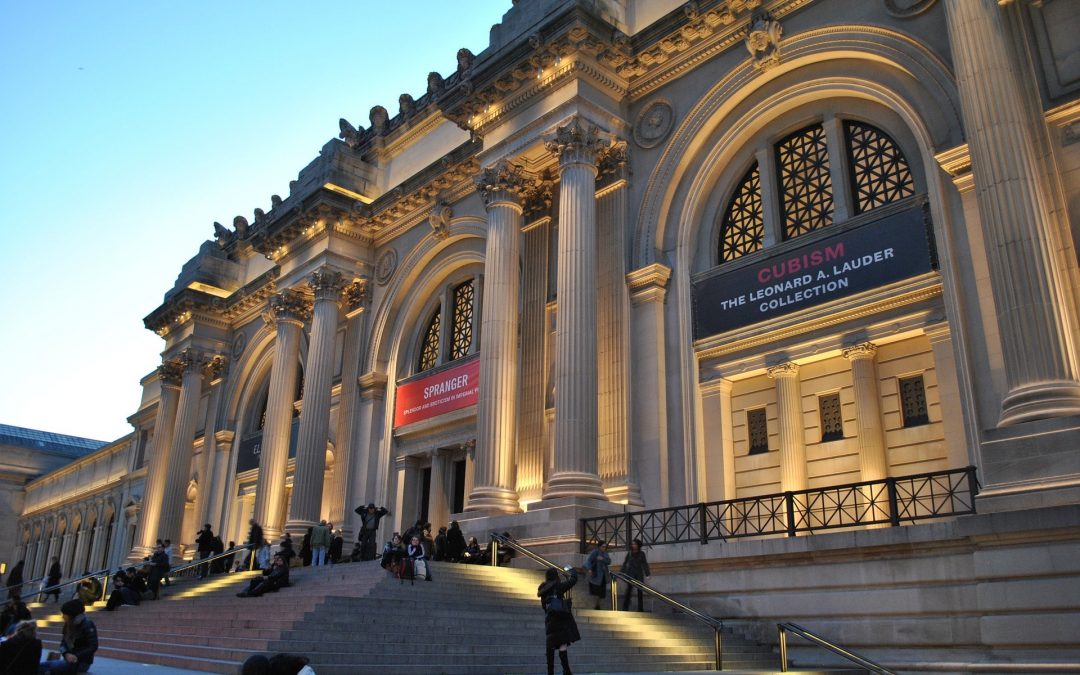
Awe-Inspiring Exhibits and Attractions Not to Miss in 2017
In its continued commitment to the New York community, the Charatan Family Foundation supports key cultural institutions like The Met, the Museum of Modern Art (MoMA), the Jewish Museum, and the United States Holocaust Museum. In an especially turbulent political climate, these institutions can inform and transform our perspective, at a time when we need to move forward together as a city and as a country. These 2017 exhibits offer insight and opportunities for development and reflection: a welcome refuge from the current divisive political dialogue.
The Picturing Math: Selections from the Department of Drawings and Prints exhibit at The Met runs until May 1. After learning the alphabet and mathematical notation at a young age, we might easily take for granted that these systems of symbols evolved to represent agreed-upon quantities and operations, and enable communication of concepts on a larger scale. Spanning 600 years of mathematical visualization, this exhibit demonstrates the subjective evolution of numerical representation.
The Mysterious Landscapes of Hercules Segers exhibit at The Met will run from February 13 to May 21. This Dutch landscape artist counted Rembrandt amongst his admirers. His etching and painting work from the early seventeenth century reveals incredibly detailed yet stark settings, cast in nuanced texture and intricate relief.
The Seurat’s Circus Sideshow exhibit at The Met will run from February 17 to May 29. This tour de force by the master of pointillism features a popular artistic theme of the late 20th century: the traveling circus. This exhibit traces the origins of Circus Sideshow (Parade de cirque) in Seurat’s other works; the fascination seasonal fairs held for contemporary artists like Picasso and Pelez; and period materials documenting the circus spectacle.
The Marsden Hartley’s Maine exhibit at The Met Breuer will run from March 15 to June 18. Hartley’s home state was a constant theme and crucial component of his career. This exhibit focuses on Maine as a subject and influence of Hartley’s abstract and Post-Impressionist work, but also includes artists who inspired his style: Paul Cézanne, Winslow Homer, and Japanese printmakers.
The Sara Berman’s Closet exhibit at The Met will run from March 6 to September 5. The opportunity to go through another New Yorker’s closet is impossible to resist. And Sara Berman was a true New Yorker in every sense: born in Belarus in 1920, Berman immigrated to New York by way of Palestine. She lived In the same apartment in Greenwich Village from 1982 until her death in 2004. Her daughter and grandson put her all-white wardrobe on display in this intimate exhibit.
The Louise Lawler: WHY PICTURES NOW exhibit at MoMA will run from April 30 to July 30. This American artist specializes in reformatting and fitting images and photographs to different surfaces, textures, and frames. These “adjusted to fit” visuals challenge the viewer to refocus the present.
The Making Space: Women Artists and Postwar Abstraction exhibit at MoMA will run from April 15 to August 13. During WWII, women stepped up to fill a vacuum at home left by men called into military service. And after the war was won, but before feminism came to the fore, these same capable, competent women occupied an in-between place. Societal roles had flexed to encompass them, then snapped rigidly back into place. This multimedia exhibit presents more than 100 works by over 50 female artists from the period between 1945 and 1968, when abstract art sought to communicate in an increasingly global and gendered society.
The Frank Lloyd Wright at 150: Unpacking the Archive exhibit at MoMA will run from June 12 to October 1. A century and a half after the famous architect was born, MoMA highlights the length and breadth of his career. The exhibit showcases Frank Lloyd Wright’s unconventional design sensibilities and contextualizes his work with other pieces.
The Louise Bourgeois: An Unfolding Portrait exhibit at MoMA will run from September 24 to January 1, 2018. This celebrated sculptor also produced a prolific print collection throughout her career that will be on display in this exhibit. MoMA has recently digitized the work. To see her prints alongside her other pieces is to understand how the mediums informed–rather than competed with–each other.
The Arcades: Contemporary Art and Walter Benjamin exhibit at the Jewish Museum runs from March 17 to August 6. Based on the masterpiece by German Jewish writer and philosopher Walter Benjamin, this exhibit is a multimedia collection featuring works by dozens of artists. In The Arcades Project, Walter Benjamin wrote about 1800s Parisien shopping malls: mazes made from iron and glass mixing people and material objects. This exhibit comprises 36 pieces, each representing a chapter of his book. Voyeurs can view the exhibit much the same way as shoppers traversed the arcades and reflect on Paris’s cultural capital in the nineteenth century.
The Some Were Neighbors: Collaboration & Complicity in the Holocaust exhibit at the United States Holocaust Museum in Washington DC examines the spread of sanctioned persecution in Nazi Germany and surrounding areas. The regime took root in the hearts and minds of citizens who cooperated for a variety of reasons, but the movement also faced resistance by brave individuals who refused to buckle under peer pressure, demonstrating the power and impact of independent opposition.
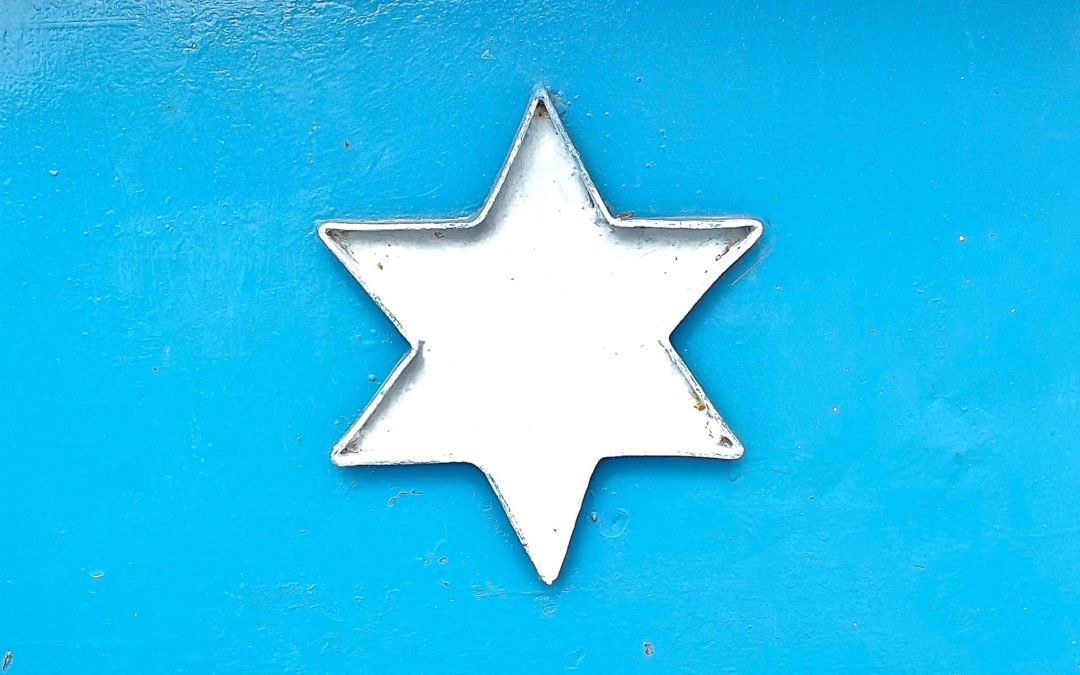
5 Jewish Women Breaking Philanthropic Ground
This year’s presidential election left the country divided as America chose a male president over a female presidential nominee. Still, Hillary Clinton’s efforts did not go unnoticed and many spoke up about how great it was to see a woman fighting her battles and standing her ground to win the election. Women continue to play an important role in shaping public policy and stand out as leaders in their communities. As we continue to support these leaders, it’s important to recognize those who are making an extra effort to give back to the community through philanthropic efforts.
We now have many strong women emerging as a powerful force on the secular and Jewish philanthropic scene, giving back by supporting empowerment programs for Jewish women and girls, funding foundations that promote Jewish leadership, and investing in Jewish camps and schools.
Here’s a closer look at five groundbreaking female Jewish philanthropists:
#1: Lynn Schusterman
As the co-chair of the Charles and Lynn Schusterman Family Foundation, Lynn Schusterman oversees more than $2 billion in assets and has made her mark on national education grant making. She is a strong leader and one of the central figures in the world of Jewish philanthropy, setting an example for other philanthropists and groups to walk in her footsteps.
She believes leadership is critical for creating a dynamic Jewish future which is why she is so committed to inspiring and empowering young Jews to take an active role in shaping their communities. The organization cultivates high-potential organizational leaders with initiative such as CareerHub, the Schusterman Fellowship, Talent Alliance, the Recruitment Network and several partnerships and collaborations that address leadership challenges in Jewish life.
#2: Diane Wohl
Diane Wohl has been instrumental in helping the Diane and Howard Wohl Family Foundation attain $6 million in assets and generating more than $749,000 in revenue since its inception in 2000.Through the Diane and Howard Wohl Family Foundation, Diane Wohl has provided long-term funding for USC Shoah Foundation’s work in France and also participated in the Auschwitz: The Past is Present mission trip to Poland for the 70th anniversary of the liberation of Auschwitz.
She and her husband have invested in future jewish college students through a planned gift to Hillel, a legacy gift since the Wohls’ children went to college at Hillel. The couple has also supported a number of other charities over the years, including UJA-Federation of New York, the Solomon Schechter Day School of Nassau County, and BBYO.
#3: Dina Karmazin Elkins
Dina Karamzin Elkins has a long family history of philanthropy and serves as the executive director of the Karma Foundation. The foundation has been providing grants since 1996 and she is committed to donating to charitable causes that she is personally connected to, such as synagogues and other local organizations. She takes the time to determine whether an organization is in a growth or decline phase so that the Karma Foundation can provide funding to the most effective, growth-oriented entities.
#4: Shira Ruderman
Shira Ruderman and her husband, Jay Ruderman, have banded together to support Jews with different abilities so they are all included in Jewish institutions. The Ruderman Family Foundation supports programs and partnerships for the advocating and advancement of the inclusion of people with disabilities throughout society. Shira is directly involved with leading innovative social and public projects. She is a member of the Israeli “Committed to Give” group which promotes private philanthropy in Israel.
The Ruderman Family Foundation has offices that raise awareness about the inclusion of people with disabilities in both Boston and Israel. It serves as a conduit through which American Jewish citizens and Israeli citizens can connect and work together on various programs. Mrs. Ruderman is committed to building a stronger relationship with the state of Israel through her efforts and plays an important role to identify strategic relationships through the organization.
#5: Susan Pearlstine
Susan Pearlstine is a fifth generation Charlestonian and supports several local Jewish and secular causes. She carries the legacy of her father, Edwin Pearlstine, who left behind a legacy of success, generosity, and community service. Mr. Bernstein also served as President for the Jewish Community Center and his synagogue, Kahol Kadosh Beth Elohim.
Unlike her male counterparts, Ms. Pearlstine prefers to identify organizations that are willing to create long term sustainability and be transparent financially. She also prefers to work with organizations that are willing to partner with her and other nonprofits for the long-term, working together for a common goal.